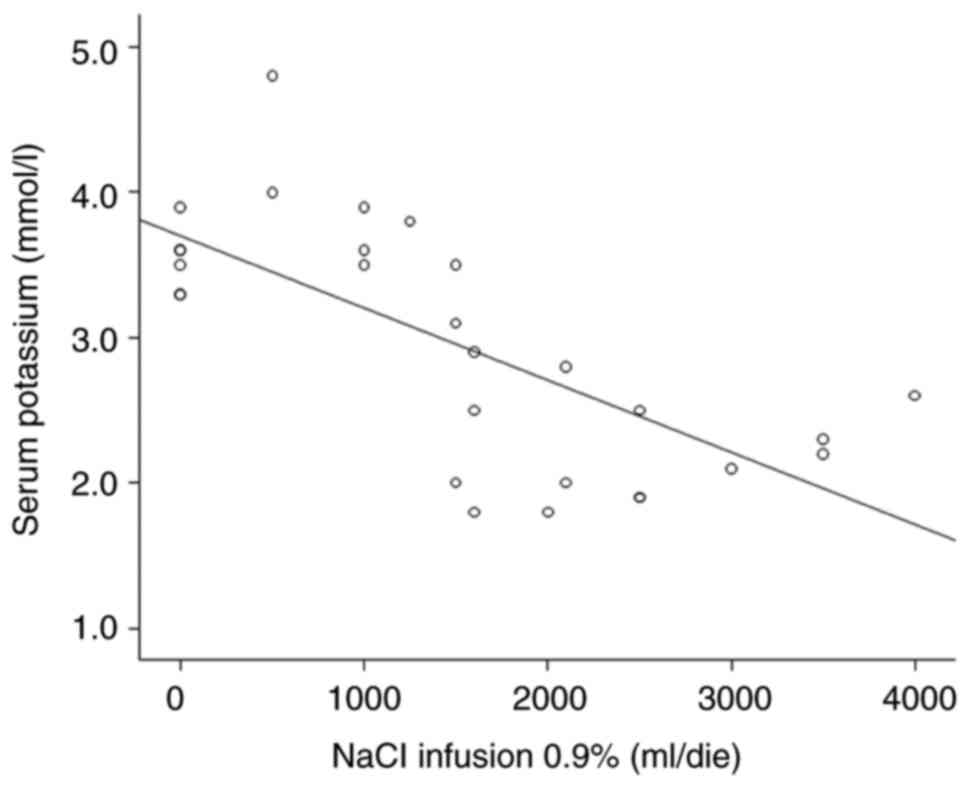Apparent excess of mineral corticoids and a point of view of an alternative statistical evaluation: A case report and mini-review of the literature
- Authors:
- Published online on: November 28, 2023 https://doi.org/10.3892/wasj.2023.216
- Article Number: 1
-
Copyright : © Zirino et al. This is an open access article distributed under the terms of Creative Commons Attribution License [CC BY 4.0].
Metrics:
Total
Views: 0 (Spandidos Publications: | PMC Statistics:
)
Total PDF Downloads: 0 (Spandidos Publications: | PMC Statistics:
)
Abstract
The present study describes the case of a 71-year-old male patient with hypocalcemia, hypomagnesemia and hypokalemia. Following infusion therapy, the serum calcium and serum magnesium levels were normalized. Conversely, serum potassium did not respond to the infusion therapy, with the progressive reduction of the serum concentration, in spite of the high dose of potassium infusion. Although unusual, the present study analyzed how infusion treatment affects kalemia. The present study used, over time, the measurements of variables on a single patient as ‘cases’ and the set of measurements of the patient himself (single patient) as a ‘cohort’. One patient can be considered as one single cluster; thus, the independence assumption is not violated. The present study quantitatively analyzed the effect of one or more treatments and in finding unknown causes that may influence the therapeutic response, particularly in situations with a paradoxical response. Thus, it was found that only potassium canreonate was related to an increase in kalemia (β=0.03, P<0.01). Based on this finding, together with the low aldosterone concentration in hypokalemia, an apparent excess of mineral corticoids was assumed.













